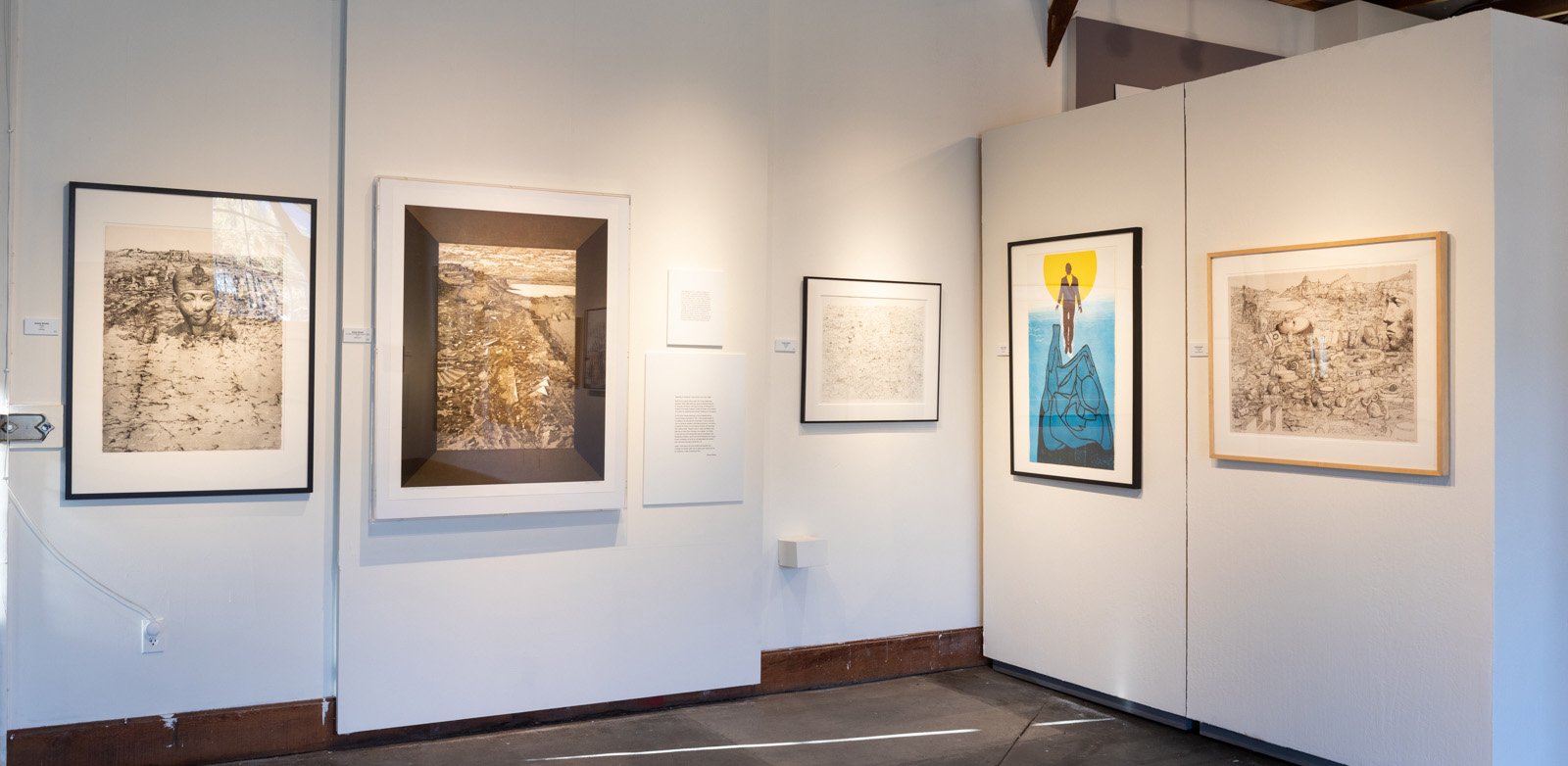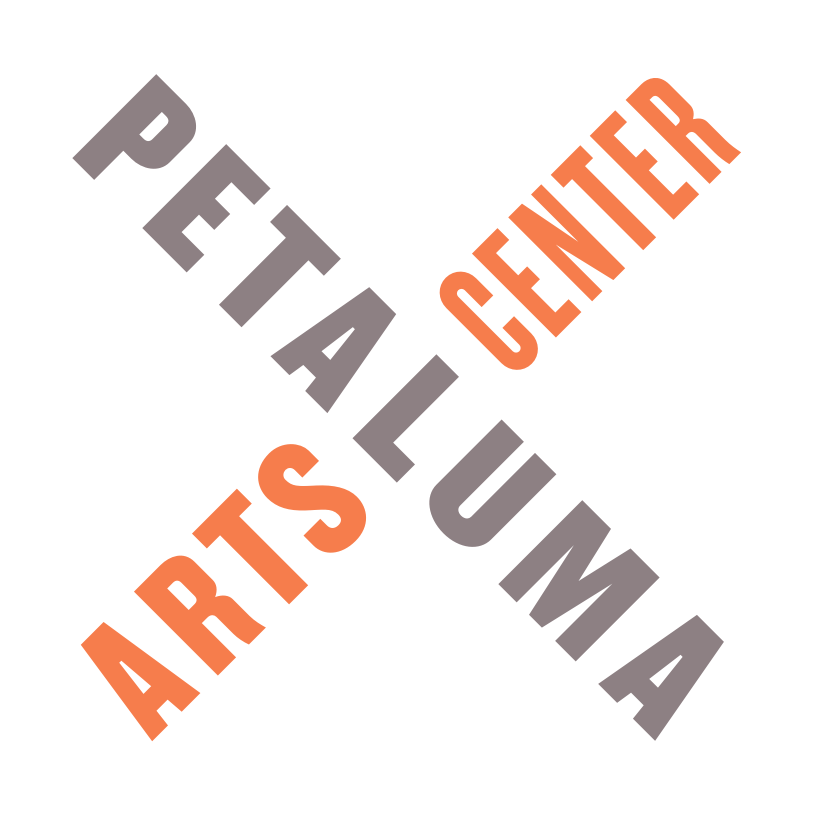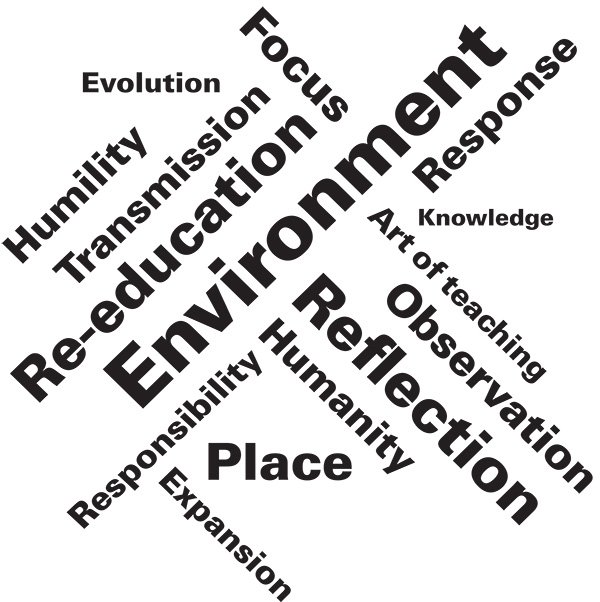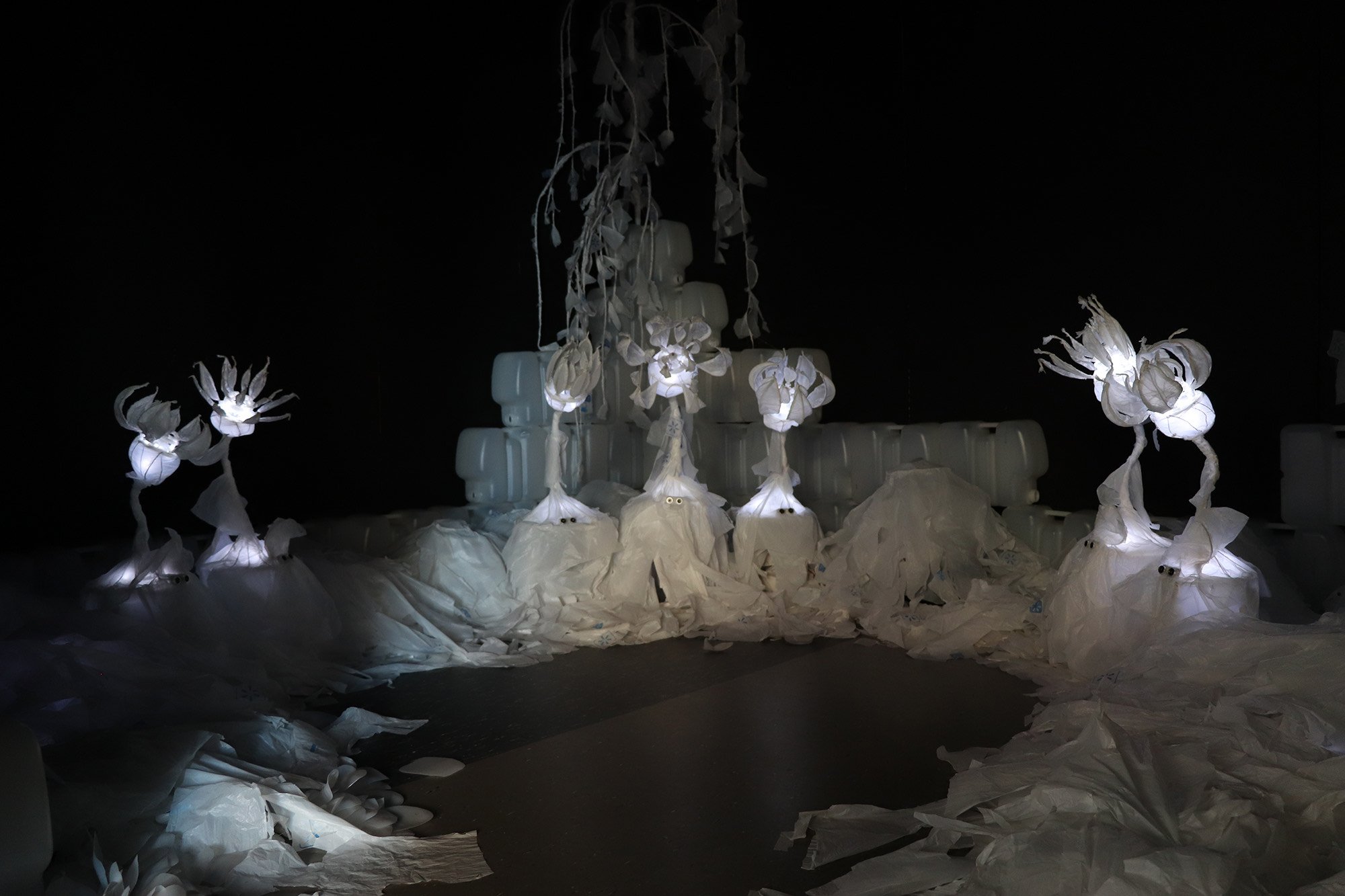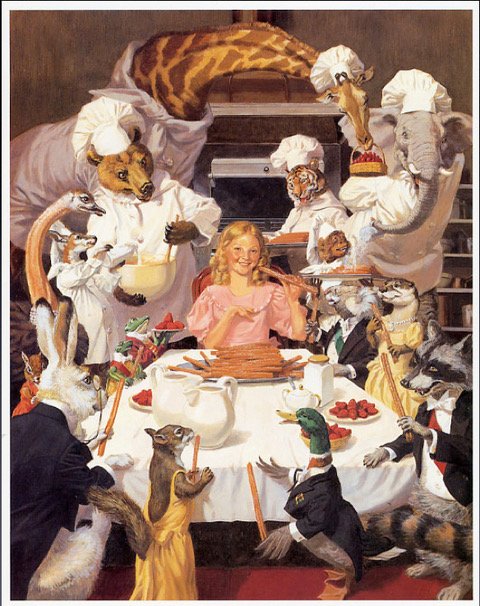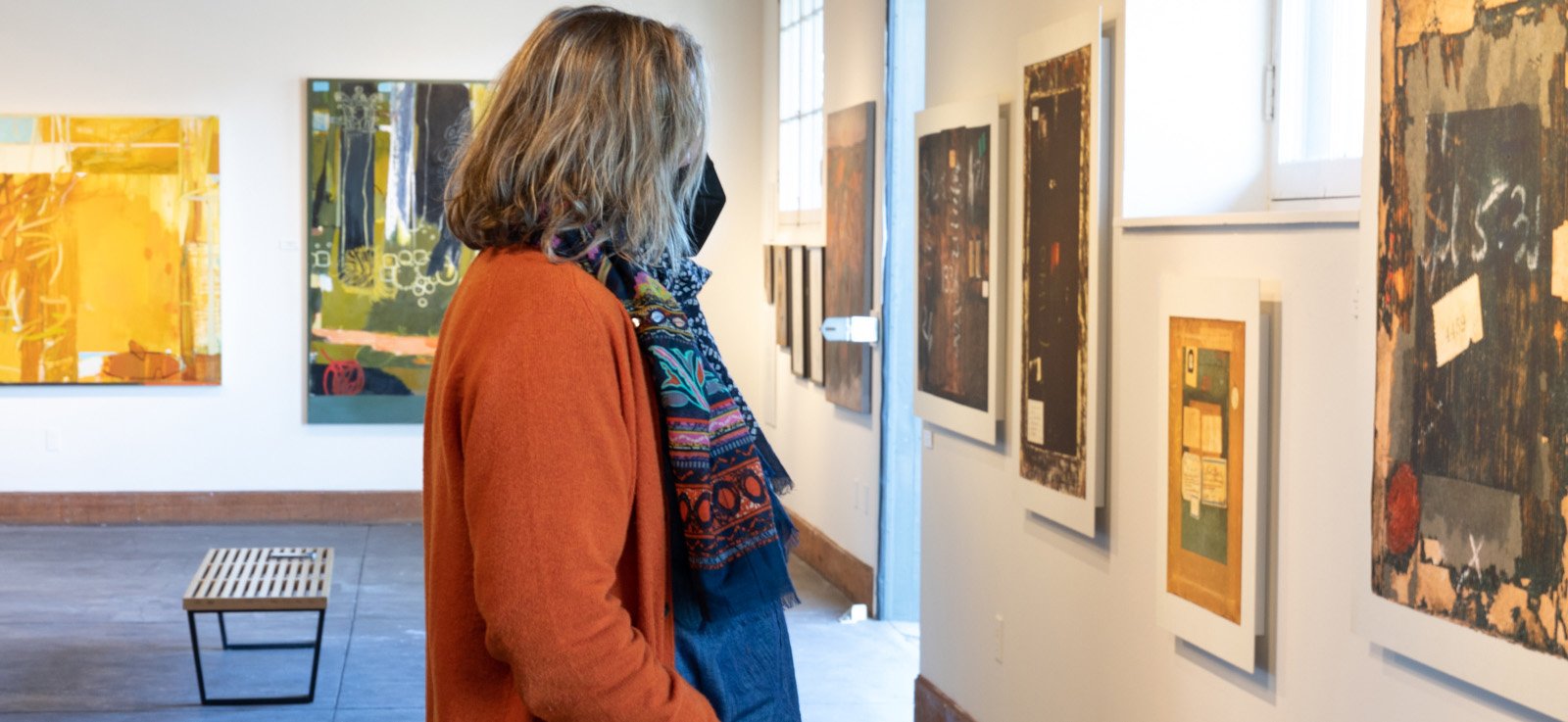
Integrating Practice: Celebrating Teaching Artists of the North Bay
January 13 - March 26, 2022 - Closing Reception March 19, 5:00- 7:00pm
The artists in this exhibition were asked to consider how their teaching has informed their own practice and vice versa, and how their choice to reside in the North Bay, rather than an urban area, has also played a role in their work. As curators, we looked for patterns in their words and chose to illustrate them here in a visual way.
Curated by Carin Jacobs and Mary Fassbinder
Sena clara creston
Sena Clara Creston is an interactive installation artist whose work focuses on the impact light, movement, and materials have on art. Her robotic sculptures reflect our relationship with the natural in an increasingly mediated world. Creston learned to see the beauty of everything growing up as an Artist in New York City and studying Photography and Imaging at NYU. She progressed to interactive installations, receiving an MFA in Electronic Arts from RPI. Creston’s work has been presented at international venues and conferences including the Borealis Festival of Light and Treefort, and she is currently an Assistant Professor of Art at Sonoma State University.
The Plastic Garden
The Plastic Garden
The Plastic Garden is an interactive installation I worked on with students from The Robotics Club at Washington State University to question the relationship between humans and the other. Students and I came from complementary backgrounds of arts and engineering to resolve desired aesthetics, mechanism, and concepts of my project incorporating students’ interests, skills, and ideas. I worked with students using sensors, motors, coding, and 3D modeling and printing for The Plastic Garden. Animatronic flowers fade their lights while opening and closing their petals as if they were breathing. When the flowers sense an approaching person, they display fear and aggression by dimming their lights, closing their petals, and shaking; or snapping their petals and flashing their lights. The viewer responds to the flowers, deciding whether to heed the expressed wishes of an unknown being and back off, or confront the artwork to be examined and understood. Upon inspection, familiar materials reveal a second ambiguous relationship. The Plastic Garden is built from discarded plastic water bottles and shopping bags; the bringer of life and the polluter of land. Contemporary consumerism created this critical environment.
frances mccormack
Frances McCormack was born in Boston and received her MFA from the University of California at Berkeley. She is Professor Emerita at the San Francisco Art Institute. McCormack was the recipient of the first SFAI faculty residency at the American Academy in Rome, three Buck Foundation individual artists grants and residencies at Djerassi in Woodside, CA and Willapa in Oysterville, WA.
In 2010 McCormack curated “Silence, Cunning and Exile” for the Sonoma Valley Museum of Art. She collaborated with composer Kurt Rohde and writer Sue Moon, creating the video for their performance titled “Artifacts”. “Artifacts” premiered at the San Francisco Conservatory of Music in 2012 and was performed at the Sonoma Valley Museum of Art in 2016. She is represented by the R B Stevenson Gallery, La Jolla, CA.
Vase VI
Teaching studio art requires enormous energy and a wide sympathy toward the many forms of visual experience. After thirty years of teaching art, it seems to me that what most teaching artists share is an endless enthusiasm for their subject and a keenly felt sense of the privilege and responsibility of working with students. Especially students who are passionate about making their own experiments and finding their own individual practice.
I was fortunate to teach for twenty-eight years at the San Francisco Art Institute. It is not a place for the faint of heart. Year after year students often challenged my authority, questioned my teaching methods, all the while working very hard and sharing with me their personal stories, their dreams and fears. It was a wonderful wrestling match and I am the better artist for it.
I moved to Sonoma in 1997. I love this part of the world. It speaks to my condition. I am not a city person and I need plants and trees and quiet to function. Pruning, weeding and planting are another version of the act of “making” that gives my life satisfaction and meaning. In teaching, painting and gardening I always work from the ground up.
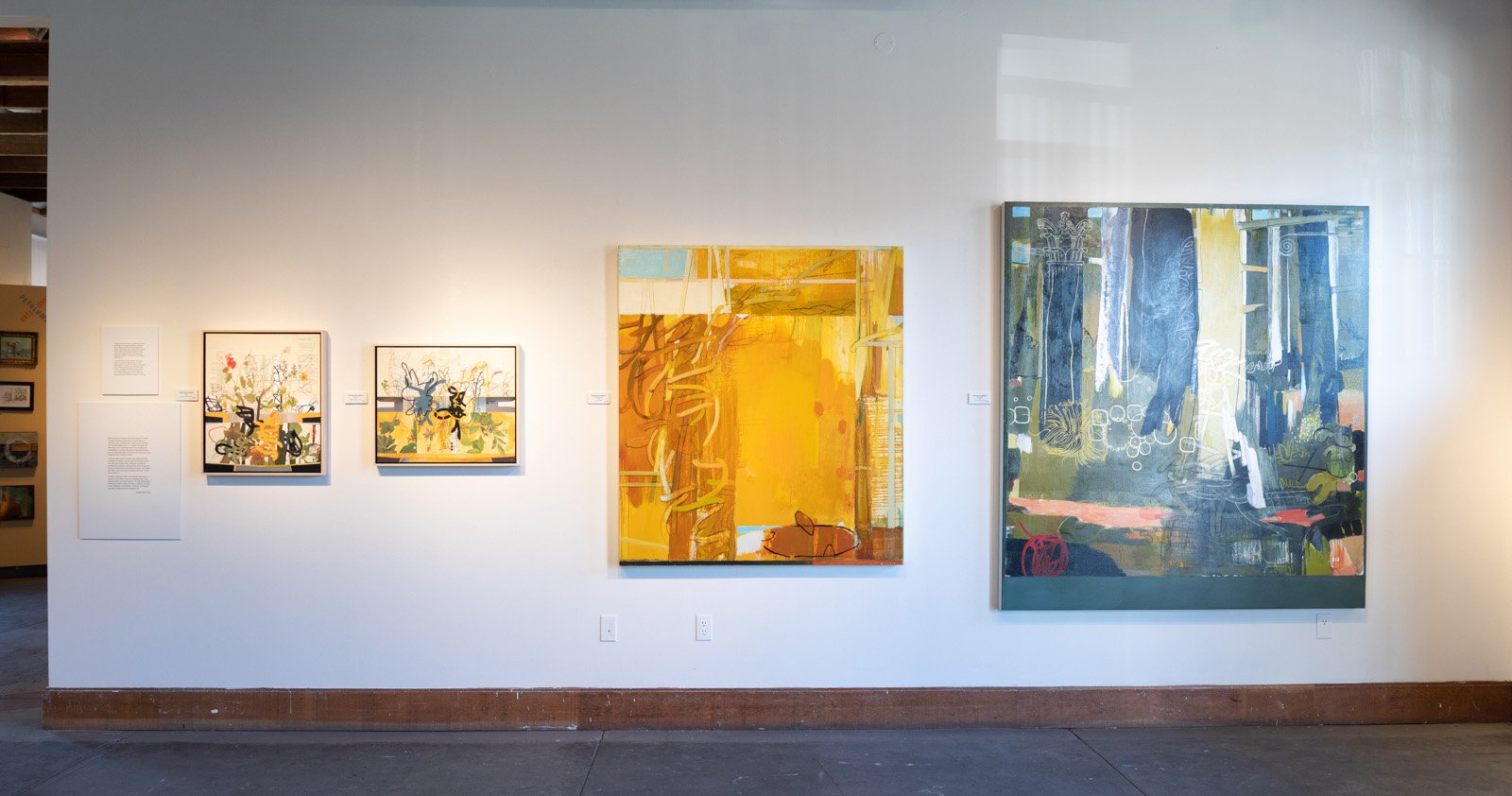
joe mcdonald
Joe is an artist, educator and working commercial photographer. He started Joseph McDonald Photography approximately 35 years ago and his history of specialized photography of fine art predates his appointment as Photographer for the Fine Arts Museums of San Francisco in 1988. Educational achievements include a BA from the University of Minnesota in Literature and Music, an MA in Humanities from Arizona State and a subsequent MA from San Francisco State in Studio Art (Photography). Currently Joe is a partner at Digital Grange, a photography and custom printing studio as well as owner of the adjacent IceHouse Gallery curating and hanging various artists’ shows. He taught for 25 years at Santa Rosa Junior College as an adjunct professor in the art department.
from the Versos series
My original goal after receiving my master's degree in art was to pursue a career in teaching at the college level. It didn't quite work out that way but I was able to teach as an adjunct professor for over 25 years albeit on a part time basis. I was inspired to teach by Dr. Robert Michael, a wonderful professor of literature at the University of Minnesota. I thought if I could only follow his lead by instilling my students with a love of learning I would be successful. I believe that my job was to inspire and empower students to think and work like artists. I believed in positive criticism, never negative, as I often taught students just beginning in the arts and it was critical to build an artistic presence or ego and not tear something fragile down. I also believed in teaching students the practical side of photography or art- that it wasn't just a hobby, but one could earn a living as an artist. In my classroom I was the facilitator and guide, giving students opportunities to create and solve artistic problems and get out of their comfort zone. I learned as much from them as I hope they learned from me.
I’ve been photographing paintings for many years both in my commercial work and as Photographer for the Fine Arts Museums of San Francisco. Often I discover beautiful and fascinating versos or backs of paintings, sometimes more interesting than the paintings themselves as they often include provenance information, stickers, calligraphy as well as the patina of age.
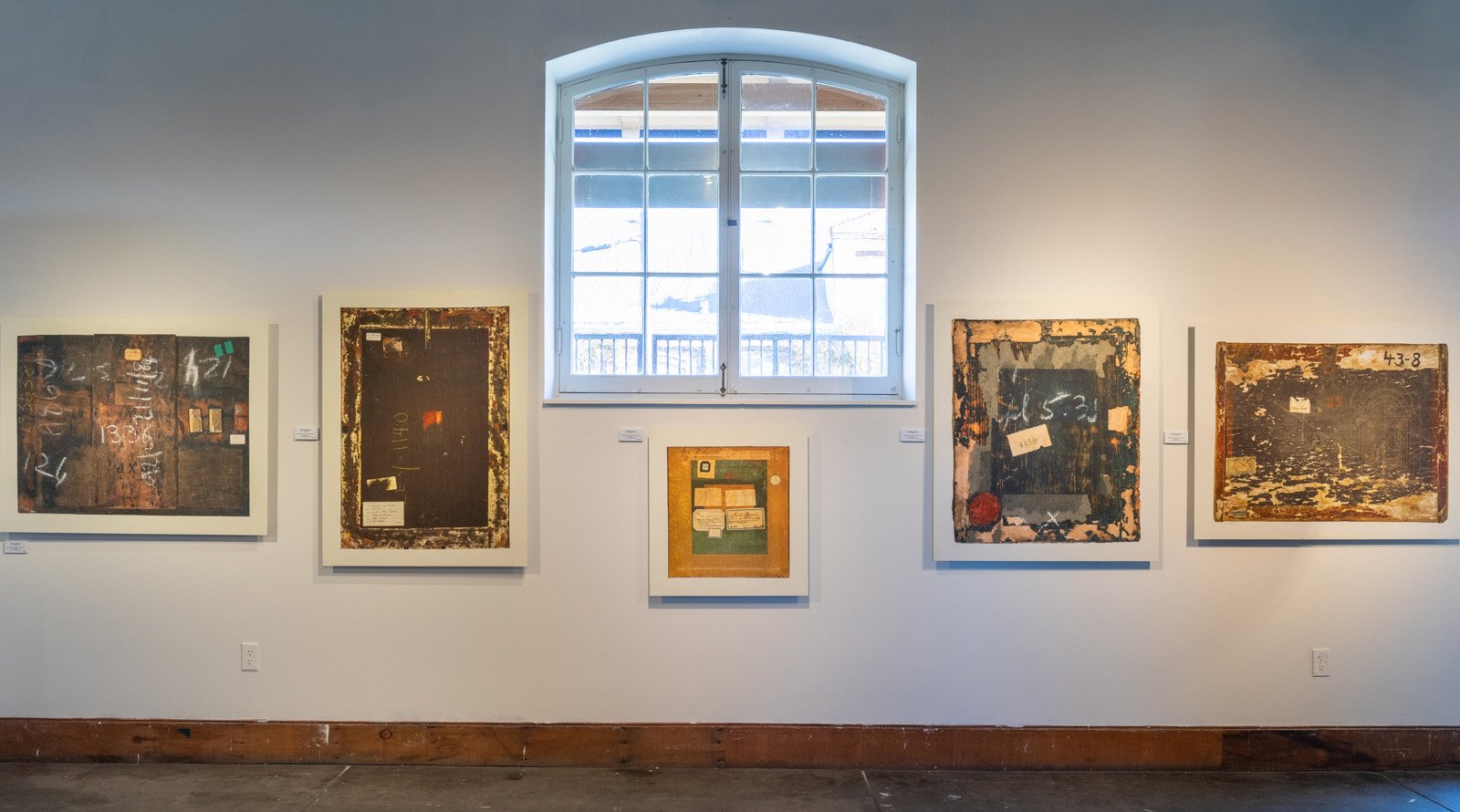
chris newhard
Christopher Newhard is a figurative and landscape painter residing in Sonoma County. As an MFA graduate of the New York Academy of Art, Newhard has taught classes and workshops focusing on portraiture and figure drawing for more than 20 years, primarily as a faculty member of the San Francisco Academy of Art University. Working from life has provided the artist with a skill set that he incorporates into his own creative work as well as being an activity that provides endless challenge and inspiration for teaching and practice.
Dream
I am a figurative painter who teaches portraiture and figure drawing. Teaching constantly reinforces the importance of basic skills and principles that I use in my own work. At the same time, my art practice allows me to approach teaching with an experience and perspective that is relevant to help students learn.
Large, cosmopolitan cities are amazing places to live. The energy, culture and vibrancy of urban environments are seductive and intoxicating. I have had the good fortune to attend graduate school in Manhattan, live in both San Francisco and Oakland and spend extended periods of time in London and Berlin.However, as a practicing artist I find the rural environment of Sonoma County more conducive to sustained, focused work with a lack of distraction. The solitude and surrounding nature (especially at my studio in Cazadero) are ideal for contemplation and maintaining a simple lifestyle and productive practice.
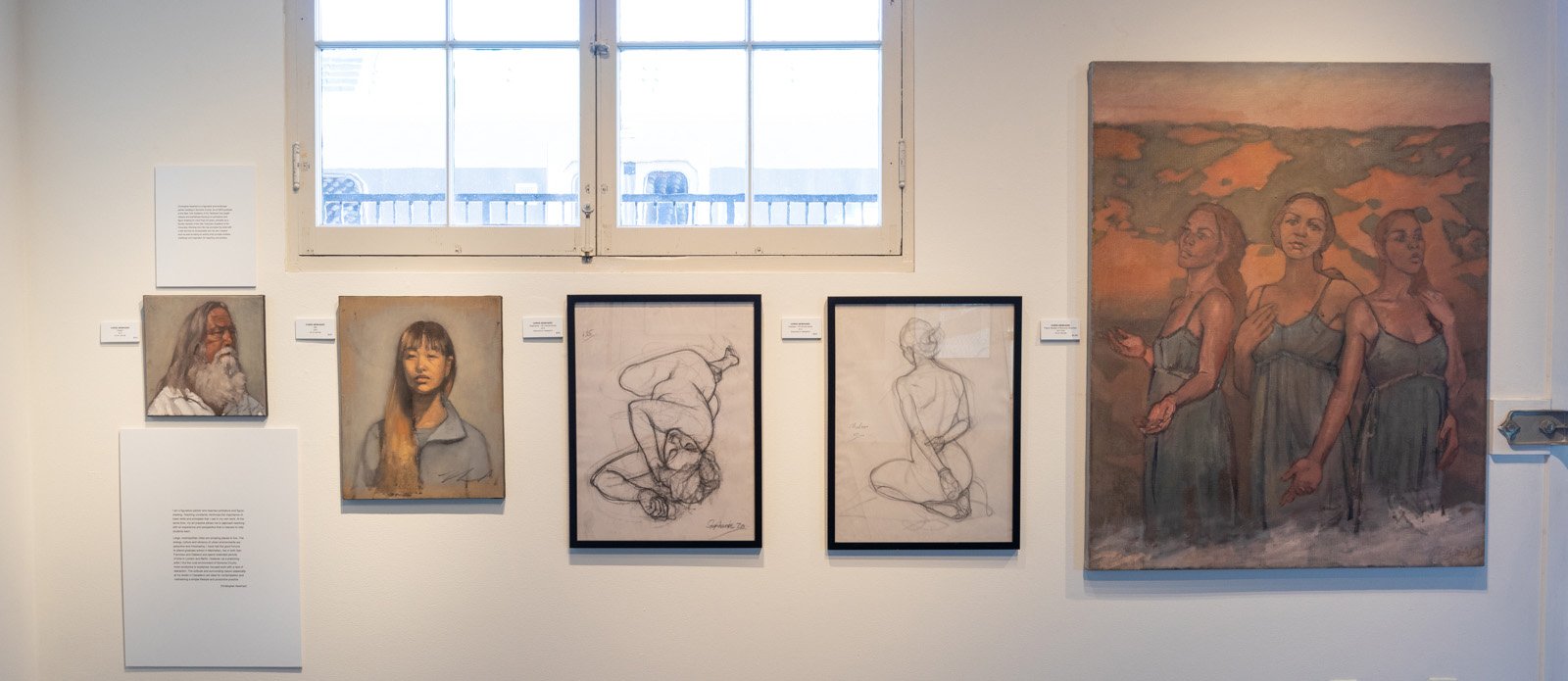
Chuck Pyle
Charles S. Pyle is a native Californian who lives in Petaluma. His style is inspired by the likes of Norman Rockwell, NC Wyeth, many other illustrators, cartoonists, and painters. Chuck’s paintings are part of many private and institutional collections. He has been commissioned to create illustrations, paintings and cartoons for clients including AT&T, United Airlines, and Viansa Winery, to name but a few.
Chuck recently retired as Director of the School of Illustration at the Academy of Art University in San Francisco, where he taught drawing, illustration, and mentored generations of artists as visual storytellers. He was a recipient of their Distinguished Alumnus Award, was awarded the 2015 Distinguished Educator in The Arts Award by the Society of Illustrators, and in 2017, the university honored him with an honorary doctorate.
Churros. Nisshing Foods, Japan
Teaching requires that you constantly reorganize what you know to share with your students. It is a cataloging and re-educational process that evolves as you do.You must find many original ways of imparting that passion and the principles being taught because each student is unique. Once they get it, you step to the side as they take on mastery of it for themselves. When I paint, I still hear the voices of my teachers and so many others, including what my students bring to the studio, as sources of inspiration. You may teach them, but you also learn from them, in turn.
I thought I would live and die a San Franciscan, then I came here, in part to make my first wife happier. Shortly thereafter I realized how happy Petaluma made me. It was still a town where you could leave your front door unlocked for days, was close enough to SF to commute, and quiet enough to declutter my soul. There are so many great models and resources to work with here. It is intimate enough to meet people of all stripes, both in the arts and in general. Petaluma in itself, and Sonoma County by extension, are beautiful enough to constantly excite my artist self.
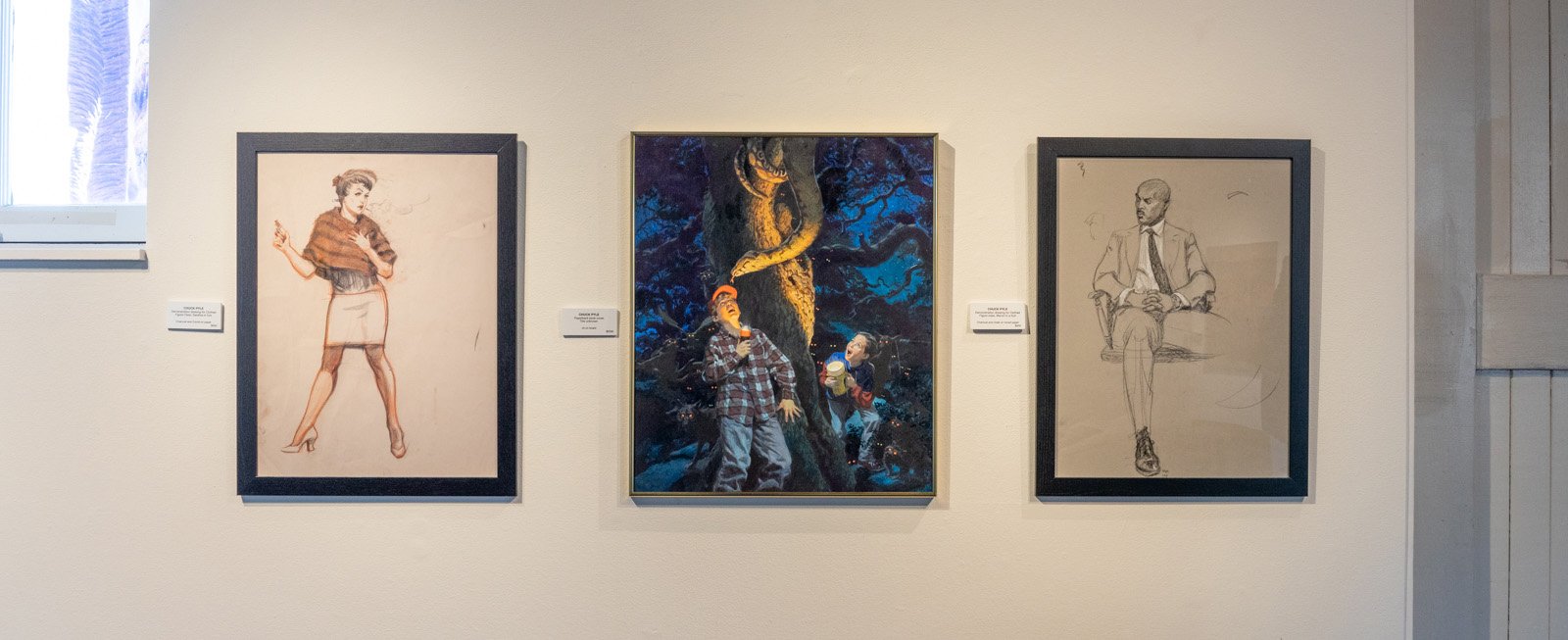
larry thomas
Larry Thomas lives and works in Fort Bragg, California. He taught printmaking at the San Francisco Art Institute for many years and held administrative positions prior to retiring in 2005.
His work is in collections of the Fine Arts Museums of San Francisco, SFMOMA, the Oakland Museum, San Jose Museum of Art and the artists’ books collections of the Metropolitan Museum of Art, Whitney Museum of American Art and Bancroft Library at U.C. Berkeley, among other public and private collections. His calligraphic work has been featured in multiple issues of both Letter Arts Review and Alphabet.
Thomas is the recipient of two NEA Individual Fellowships, a Pollock-Krasner Foundation Grant and SFMOMA’s SECA Award. He was a Visiting Scholar at the American Academy in Rome, resident at Sitka Center for Art & Ecology and Djerassi Resident Artists Program.
Ophir, IV
Teaching was enormously satisfying and stimulating in many respects. Working with serious students over the years provided a unique insight into various measures of studio engagement and the creative process in general which, in turn, informed and expanded my personal studio activity in important ways. Following former students’ development and contributions to the field as they engage with the world has also been particularly gratifying and has provided me with a sense of value and appreciation for teaching.
Humility, patience, clarity of purpose and authenticity as well as devotion, hard work and tenacity are a few of the important lessons learned through teaching over the years. These qualities, attitudes and observations have served well as beacons and guide posts. They are reminders of the qualities shared with students and fellow colleagues that comprise the foundation for teaching and the values held within the profession.
The title of this series of dry point prints, Ophir, I - VI, was inspired by the first verse of the poem “Cargoes” by John Masefield. The dry point prints themselves refer to remnants of ancient ships possibly in situ at some unknown site in the Levant.
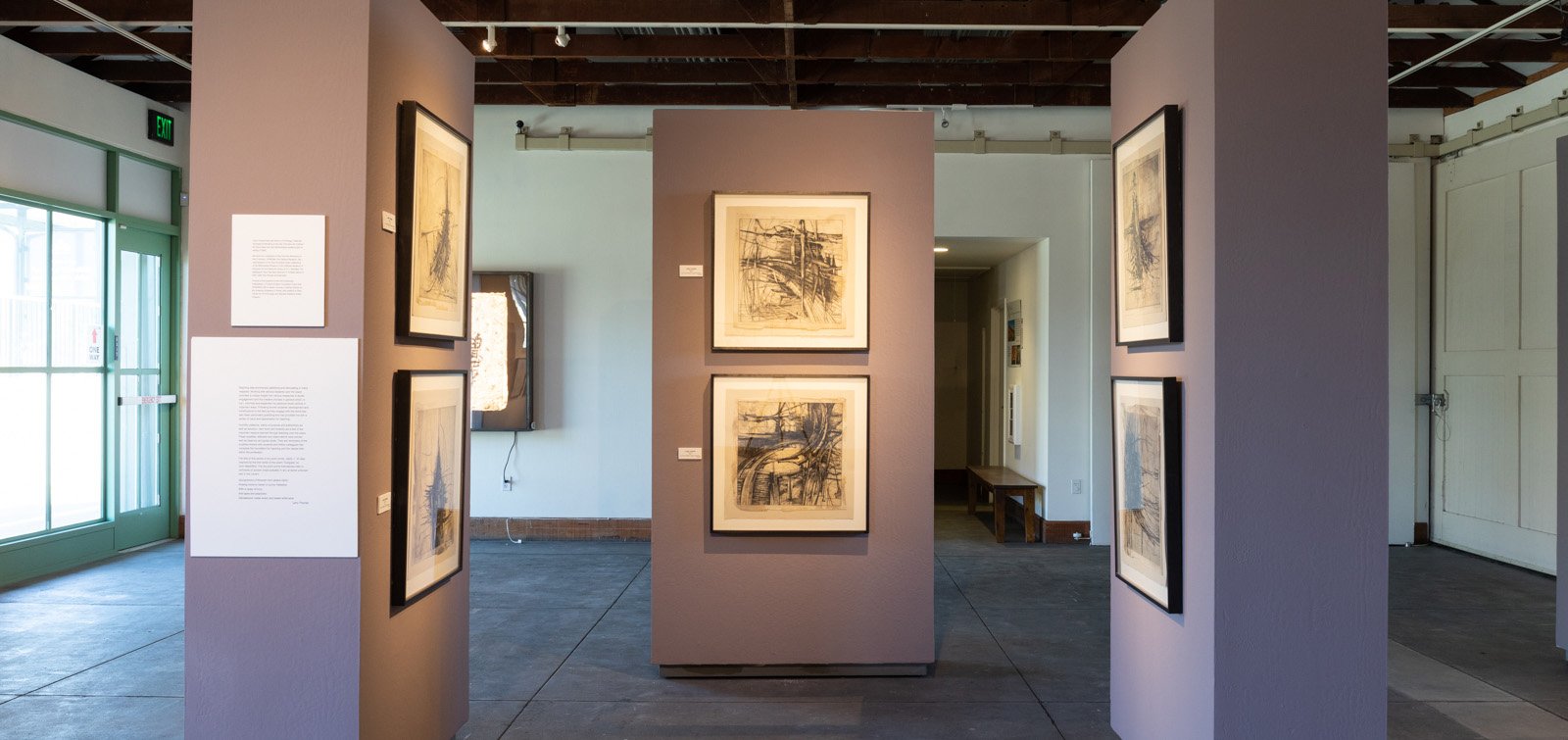
shane weare
Shane Weare was born in Lyndhurst, England, on August 20, 1936. He attended Falmouth College of Art in Cornwall, England and studied printmaking at the Royal College of Art in London where he received his A.R.C.A (Associate of the Royal College of Art) in 1963. After teaching at the central School of Art and Design (London), he did his postgraduate work at the University of Iowa, studying printmaking with Mauricio Lasansky. He has taught at the University of California, Santa Barbara, the San Francisco Art Institute and the California College of Arts and Crafts and, in 1971, started teaching at Sonoma State University where he became a professor, teaching art and printmaking, and from which he retired as Professor Emeritus in 2000.
It’s Silent and Whistling Doesen’t Help
Teaching art students, I have found, is an art in itself.
Both of my parents were artists. So it was natural that between 1955-1960 (after two years of National Service in Guyana, Jamaica), I felt right at home at Falmouth Art School in Cornwall, England, where the basis of my artwork and, later, my teaching was formed: Drawing & Printmaking.
By the time I started teaching in the art department at Sonoma State University in 1971, I had already taught at ten different art schools and universities. I was convinced that my students needed a thorough grounding in art history, including the history of printing making, lectures and seminars with visiting artists, frequent visits to major exhibitions and field trips to New York, Chicago, Los Angeles. I’m thrilled to have led two printmaking field trips to Guadalajara and Zacatecas in Mexico, each time with 20 students and faculty. It was a revelation for all of us, but particularly the student who had never traveled outside the U.S.
Lastly, I think about my time at SSU with warmth and nostalgia for faculty, staff, the art gallery and, above all, for my students. It was a marvelous time.
